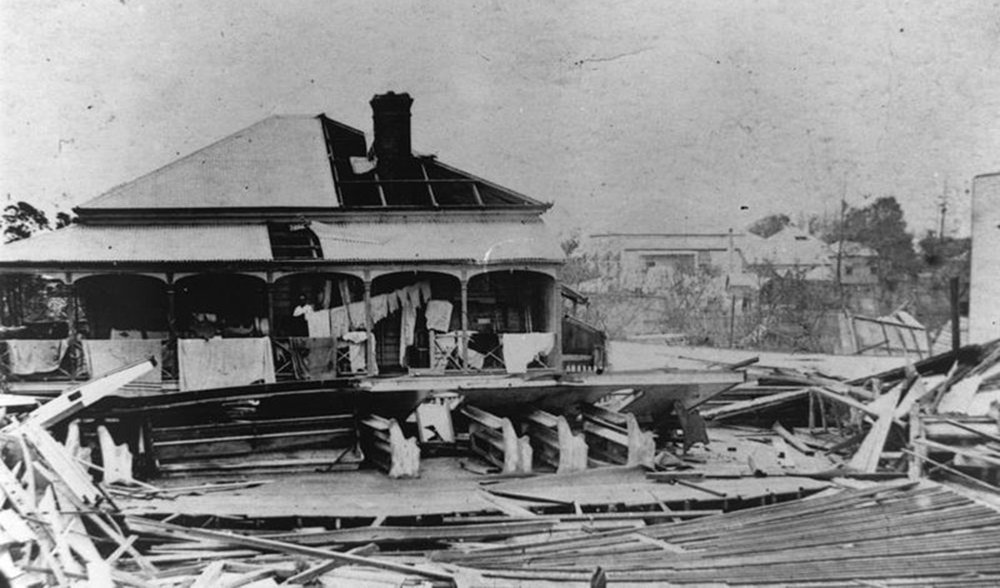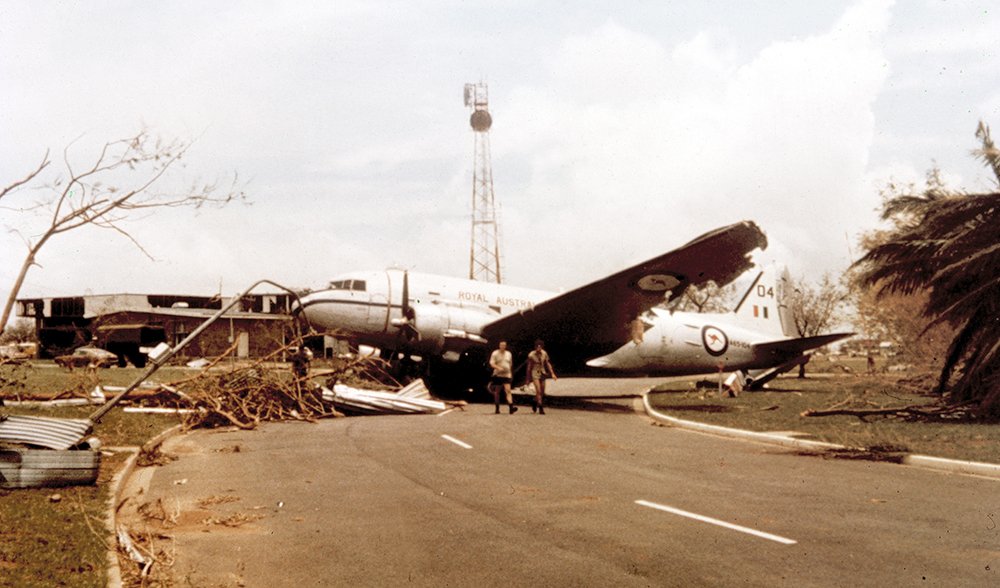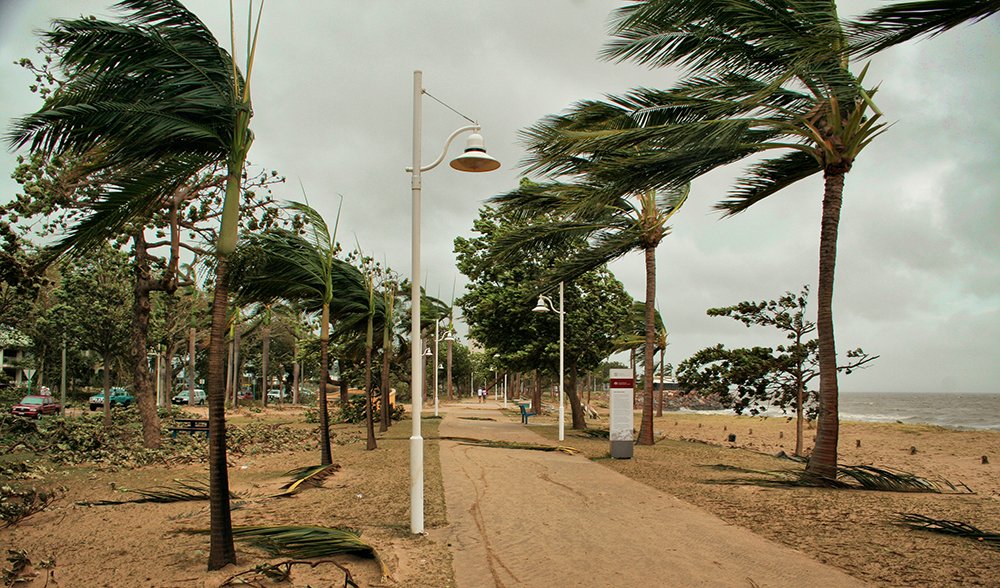Australia’s worst cyclones: timeline

An updated version of this article was published in February 2016. Click here to read the updated version.
EVERY NOVEMBER TO April, northern Australia endures its annual cyclone season. In February 2011, Category 5 Cyclone Yasi smashed the Far North Queensland coast, devastating the region around Cardwell and Tully.
“This is looking like the most intense and largest cyclone that we’ve had since 1918 for the east coast of Queensland,” said Professor Jonathan Nott at James Cook University, at the time. “It’s going to cause storm tides to go through people’s houses. We can expect some areas to be really badly impacted by the storm tide…I think it will show people just how dangerous it is to live so low relative to sea level and so close to the beach.”
1899 – Cyclone Mahina (Category 5)
It’s estimated more than 400 people perished when Cyclone Mahina hit Princess Charlotte Bay in March 1899. The cyclone is considered to be the deadliest natural disaster in Australia’s history. Hundreds of those who died were on pearling fleet vessels, while stories suggest another 100 were local Aboriginal people.
1918 – Cyclone Mackay (Category 4)
When the cyclone hit Mackay on 20 January, it destroyed all communication links into the town. It’s now believed 30 people died in the tragedy – and the rest of the world didn’t know anything about it until five days later.

Cyclone damaged Methodist Church at Mackay, 1918 This image depicts the flattened Methodist Church on Gregory Street, Mackay and the damaged Parsonage next door. (Image: John Oxley Library, State Library of Queensland)
1918 – Cyclone Innisfail (Category 5)
On the 10 March Innisfail, QLD was a town of 3500 people. Following the cyclone that day, just 12 houses remained. Thirty-seven people died in Innisfail, while an additional 40 to 60 people were killed in surrounding areas.
1970 – Cyclone Ada (Category 4)
A total of 14 people died as a result of Category 4 Cyclone Ada, which caused severe damage to resorts on Queensland’s Whitsunday Islands in January 1970. Daydream, South Molle and Hayman islands were affected. The damage bill was estimated at $390 million (1970 value).
1971 – Cyclone Althea (Category 4)
Cyclone Althea was at the time considered to be one of the strongest cyclones to affect the QLD coast. There were three deaths in Townsville and damage costs in the region reached $50 million (1971 value). Many houses were damaged or destroyed, including 200 Housing Commission homes. On Magnetic Island, 90 per cent of the houses were damaged or destroyed.
1972 – Cyclone Emily (Category 2)
Emily crossed the Queensland coast in late March 1972, just to the southeast of Gladstone, QLD. Wind damage was confined to trees and sheds; however, the cyclone had been very severe before it hit land, generating huge seas that claimed the lives of eight seaman in three separate incidents off the southern and central QLD coasts.
1974 – Cyclone Tracy (Category 4)
Tracy struck Darwin on Christmas morning in 1974. It remains Australia’s most destructive cyclone, with winds of around 250km/h. At least 65 people were killed, and many thousands injured. Of a population of 43,000, more than half were left homeless, according to the Australian government.

Destruction in Darwin following Cyclone Tracy in 1974. (Image: AAP/AP)
1975 – Cyclone Joan (Category 5)
Joan was a severe tropical cyclone with maximum measured wind gusts of 208 km/h. It damaged 85 per cent of the houses in Port Hedland, 600km south-west of Broome, WA, and other settlements along its path. Subsequent flooding damaged roads and sections of the iron ore railways, particularly that of Hamersley Iron Pty Ltd. Sheep losses were heavy, but there was no loss of human life or serious injury. The estimated damage to private property and public facilities is believed to have exceeded $25 million.
1978 – Cyclone Alby (Category 4)
Alby passed close to the southwest corner of Western Australia on 4 April 1978, killing five people and causing widespread but mostly minor damage to the southwest. The damage bill was estimated to be $39 million (2003 value). Storm surge and large waves caused coastal inundation and erosion from Perth to Busselton, while fires fanned by the very strong winds burned an estimated 114,000 hectares of forest and farming land.
1986 – Cyclone Winifred (Category 3)
Winifred became a cyclone on 27 January 1986, about 450km north of Cairns. She crossed the coast south of Innisfail on 1 February, leading to three deaths – one during the storm, one as a result of associated flooding and a third from severe injuries sustained during the event. The best estimate of damage cost is between $130 and $150 million, most of this being crop losses to the value of about $90 million.
1989 – Cyclone Orson (Category 4)
Orson was one of the most powerful tropical cyclones to affect the West Australian coast. It crossed the coast on 23 April at Cape Preston, 70km west of Karratha. Five hours earlier the eye of the cyclone passed over North Rankin gas platform where the minimum pressure recorded was 905hPa, the lowest ever in an Australian cyclone.
Several Indonesian fishing vessels were reportedly sunk by the cyclone in the vicinity of Ashmore Island, with at least four lives lost. The total damage cost was estimated to be in excess of $20 million.
1995 – Cyclone Bobby (Category 4)
Bobby moved slowly and erratically along the Pallara coast (the middle of WA’s coast, near Exmouth), crossing it just to the east of Onslow on 25 February 1995. Seven lives were lost when two fishing trawlers were sunk off the coast from Onslow to the north of Exmouth, while one motorist drowned while attempting to cross a flooded creek near Carnarvon to the south.
1997 – Cyclone Justin (Category 3)
Justin crossed the QLD coast as a category two cyclone northwest of Cairns on 22 March. The combined effects of heavy rain, large seas and gale- to storm-force winds caused widespread damage in the region between Cairns and Townsville and the loss of two lives. Earlier in Justin’s lifecycle, 30 people were killed in Papua New Guinea and five people died when their yacht was destroyed. Justin was reportedly responsible for an estimated loss of $150 million to the agricultural industry alone.
2005 – Cyclone Igrid (Category 4/5)
Cyclone Ingrid was unusual in that it impacted three states and one territory in March 2005. It crossed the far north Queensland coast near Lockhart River as a Category four and intensified into a category five as it impacted on the Northern Territory coastline before weakening and building back up to category four as it crossed WA’s Kimberley coast.
Large sea swells outside of Australia’s warning area caused a boat to capsize near Kerema in Papua New Guinea, resulting in the loss of five lives. There were no reports of serious injury or death in Australia.
2006 – Cyclone Larry (Category 4)
Larry crossed the north QLD coast near Innisfail as a category four system on 20 March. The cyclone damaged 10,000 homes in the region and hit farmers hard. The Federal Government put the damage bill at $1.5 billion. No lives were lost and no serious injuries were reported.
2007 – Cyclone George (Category 5)
George was both very intense and physically large; the most destructive cyclone to affect Port Hedland, WA, since Cyclone Joan in 1975. Reported impacts include three fatalities and numerous injuries at locations south of Port Hedland. Damage was estimated at $8 million.
2011 – Cyclone Yasi (Category 5)
On 3 February, Cyclone Yasi – a massive 1450km in diameter – crossed the Queensland coast at about 25km/h and with wind gusts of 285km/h (though no equipment was able to directly measure the winds).
Thousands of people were evacuated from Cairns with fears the city could take a direct hit. In the end, Yasi’s path had Mission Beach, near Cardwell, and the World Heritage-listed Hinchinbrook Island in mind – it flattened sugar cane and banana crops, huge areas of trees and many buildings. One person was killed, after being asphyxiated by generator fumes while sheltering inside. The cyclone was so powerful it didn’t completely disperse until it reached the centre of Australia, near Alice Springs. It’s estimated Cyclone Yasi cost $3.6 billion in damage – the most costly cyclone in Australia to date.

Sand and tree debris along the Esplanade Townsville. (Image: Rob and Stephanie Levy / Wikimedia)
Receive great savings and a gift when you subscribe to our magazine
RELATED STORIES




